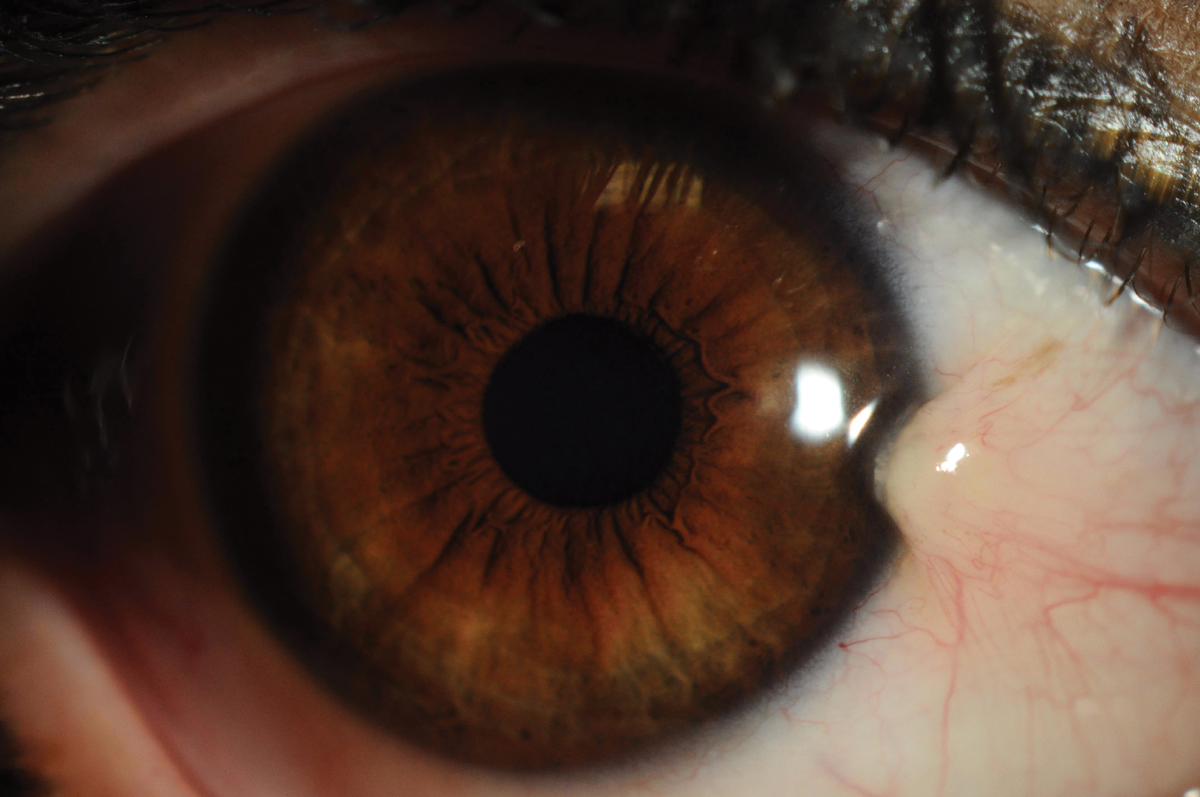 |
| Pterygium horizontal length and thickness affected visual function more than width. Photo: Amy Humphreys. Click image to enlarge. |
It’s no surprise that the presence of a pterygium on the ocular surface can cause visual performance changes, but what has yet to be studied in research is how some of these induced changes impact less ideal lighting environments. New research has produced some answers to this gap in literature, studying the effect of different-sized pterygia on the front and back corneal topography, refractive changes and aberrations in both natural and low-light conditions.
Included in the study were 66 participants with unilateral primary nasal pterygium. All were recorded for their uncorrected, best spectacle-corrected visual acuity and corneal topographic aberration data were collected for 3mm and 7mm areas. Results indicated that front topographic astigmatism values, corneal total aberrations and higher-order aberrations in 3mm and 7mm areas were higher in the pterygium than with controls. The pterygium group also had lower uncorrected visual acuity values than the control group. Horizontal length and thickness of pterygia were moderately to strongly correlated with astigmatism and root mean square of aberrations, but vertical length showed no or only mold correlation with corneal astigmatism and aberrations. Front and back corneal astigmatism and aberrations were found larger in the 7mm area than the 3mm.
The study authors contextualize these findings, explaining how decreased corneal power and increased front surface corneal astigmatism both resulted from pterygium. However, corneal power and astigmatism of the back corneal surface did not change at the 3mm zone when compared with controls. What’s more, pterygium eyes flattened at the 3mm zone of the anterior surface of the cornea, whereas the posterior surface didn’t display any obvious variations.
Looking at low-light conditions, pupil diameter was 6.9mm±0.6mm in the pterygia group and 6.9mm±0.8mm for controls. Corneal parameters were chosen in the 7mm corneal zone to simulate low-light conditions. In this zone, the astigmatism of front and back corneal surfaces, total aberrations and higher-order aberrations of pterygium eyes were all larger than at the 3mm zone. The researchers equate these observations to visual function being worse in low-light conditions for this patient population. They do offer one piece of advice, considering these differences, stating that, “those who work in relatively dim environments should be advised to undergo surgery earlier.”
The results of the study can be summarized best by the authors, who relay “pterygium impaired visual function by inducing focal corneal flattening, severe astigmatism and increased corneal aberrations, not just by invading the visual axis or distorting the central topography.”
More importantly, this research has indicated novel findings for low-light conditions, having “visual function worsened due to increased corneal astigmatism values and aberrations.”
Xu W, Li X. The effect of pterygium on front and back corneal astigmatism and aberrations in natural-light and low-light conditions. BMC Ophthalmol. 2024;24(1):7. |

